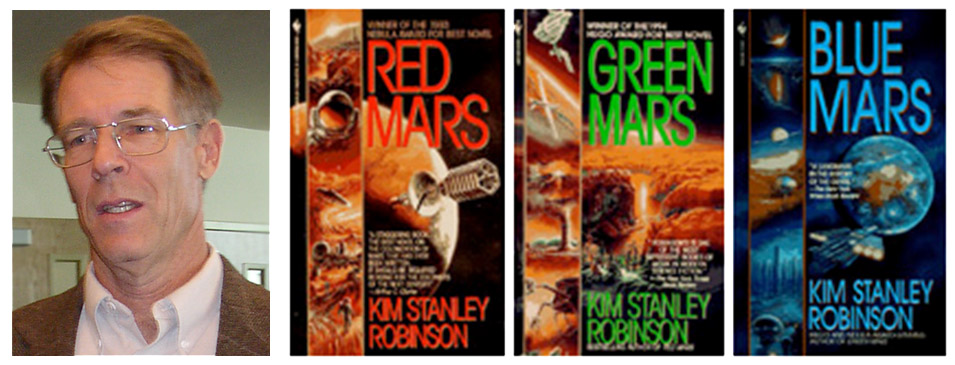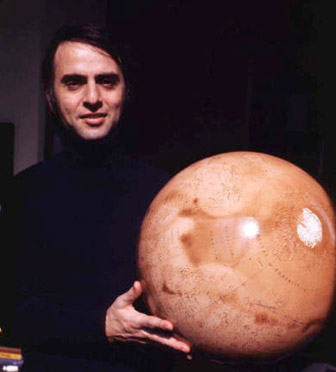Team:Valencia/Terraforming
From 2010.igem.org
Alejovigno (Talk | contribs) (New page: __NOTOC__ {{:Team:Valencia/head}} <div id="HomeCenter"> <div id="Titulos"> Terraforming of Mars </div> ''Terraforming'' of a planetary body (planet or moon) or ''planetary ecosynthesis'' ...) |
|||
| Line 3: | Line 3: | ||
<div id="HomeCenter"> | <div id="HomeCenter"> | ||
<div id="Titulos"> | <div id="Titulos"> | ||
| - | + | The setting: terraforming of Mars | |
</div> | </div> | ||
''Terraforming'' of a planetary body (planet or moon) or ''planetary ecosynthesis'' is the hypothetical process of deliberately modifying its atmosphere composition, temperature, topography, or ecology to be similar to those of Earth to make it habitable for Terran organism, including humans. Terraforming is a common concept in science fiction. In fact, Jack Williamson, a science fiction writer, coined the term in 1942. But the first to use the concept was H.G. Wells in his ''The War of the Worlds'' (1898), where the martian invaders start a terraforming-reverse process in order to change our planet for their own benefit. Recent work in fiction exploring this concept includes the wonderful ''Mars Trilogy'' by Kim Stanley Robinson that has filled our dreams about the red planet with astonishing details | ''Terraforming'' of a planetary body (planet or moon) or ''planetary ecosynthesis'' is the hypothetical process of deliberately modifying its atmosphere composition, temperature, topography, or ecology to be similar to those of Earth to make it habitable for Terran organism, including humans. Terraforming is a common concept in science fiction. In fact, Jack Williamson, a science fiction writer, coined the term in 1942. But the first to use the concept was H.G. Wells in his ''The War of the Worlds'' (1898), where the martian invaders start a terraforming-reverse process in order to change our planet for their own benefit. Recent work in fiction exploring this concept includes the wonderful ''Mars Trilogy'' by Kim Stanley Robinson that has filled our dreams about the red planet with astonishing details | ||
Revision as of 07:41, 26 October 2010
Time goes by...
(El tiempo pasa...)
Follow us:

Our main sponsors:

Our institutions:

Visitor location:
The setting: terraforming of Mars
Terraforming of a planetary body (planet or moon) or planetary ecosynthesis is the hypothetical process of deliberately modifying its atmosphere composition, temperature, topography, or ecology to be similar to those of Earth to make it habitable for Terran organism, including humans. Terraforming is a common concept in science fiction. In fact, Jack Williamson, a science fiction writer, coined the term in 1942. But the first to use the concept was H.G. Wells in his The War of the Worlds (1898), where the martian invaders start a terraforming-reverse process in order to change our planet for their own benefit. Recent work in fiction exploring this concept includes the wonderful Mars Trilogy by Kim Stanley Robinson that has filled our dreams about the red planet with astonishing details
In the scientific field, the first one who talk about terraforming of Mars was the ever-inspirational planetary astronomer Carl Sagan in The Long Winter Model of Martian Biology: A Speculation (1971) and in Planetary engineering on Mars (1973) both published in Icarus. In [http://www.youtube.com/watch?v=XzVYwyxidDY Blues for the Red Planet], the fifth episode of his mythical television series Cosmos: A personal Voyage, he exposes his ideas to the public. Sagan’s plan for terraforming of Mars implies seeding its polar casquets with dark plants. These plants will be artificially selected or genetically modified to resist and “survive” the harsh conditions of Mars climate. The positive point gained with this seeding will be realeasing oxygen and darkening the martian surface, melting down the polar casquets and liberating the ancient martian atmosphere trapped in there. This fusion water could be transported to the equator by the construction of a network of channels, similarly to the one Percival Lowell believed an inexistent Martian civilization had constructed. Sagan’s opinion about the ethics of this terraforming process, in the case the planet result not sterile is categorical:
"If there is life on Mars, then I believe we should do nothing to disturb that life. Mars, then, belongs to the Martians, even if they are microbes."In the last years several review works about the concept of terraforming have appeared in the scientific literature. McKay and Marinova (2001) review the general aspects regarding the planetary ecosynthesis in the red planet and the ethics of that process. Graham (2004) has focused in the biological aspects of the creation of a biosphere on Mars and has delineated the stages of such a process. Finally Beech has written a book Terraforming: The Creation of Habitable Worlds (2009) in which the terraforming process is exhaustively analysed. To delve deeper into this exciting process, we recommend the reading of such works and the introduction to the survey of the ethics of terraforming that we have written.
 "
"

